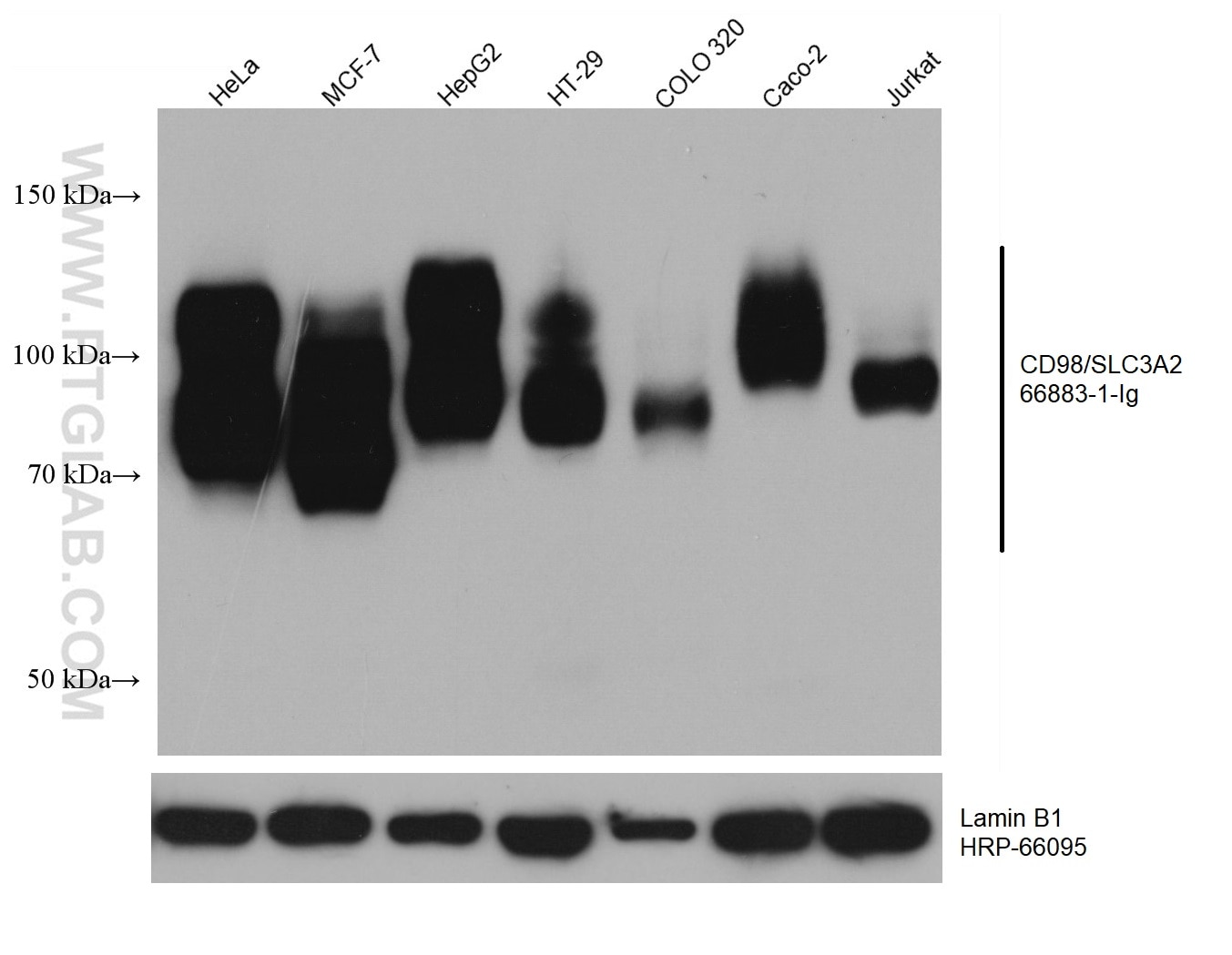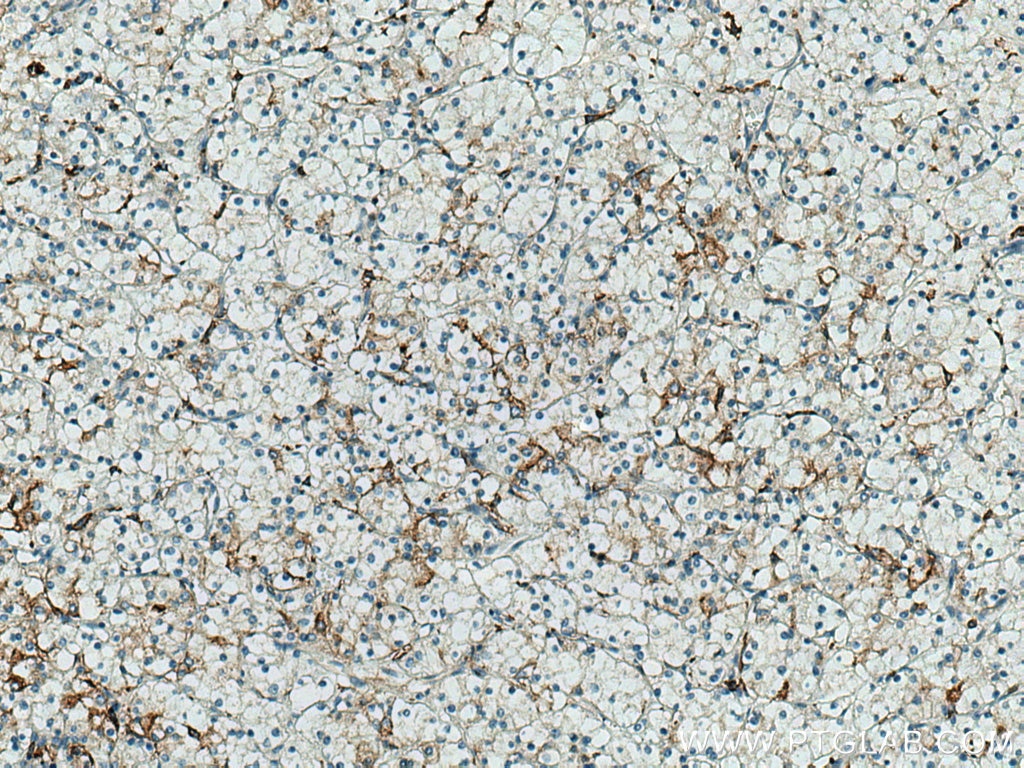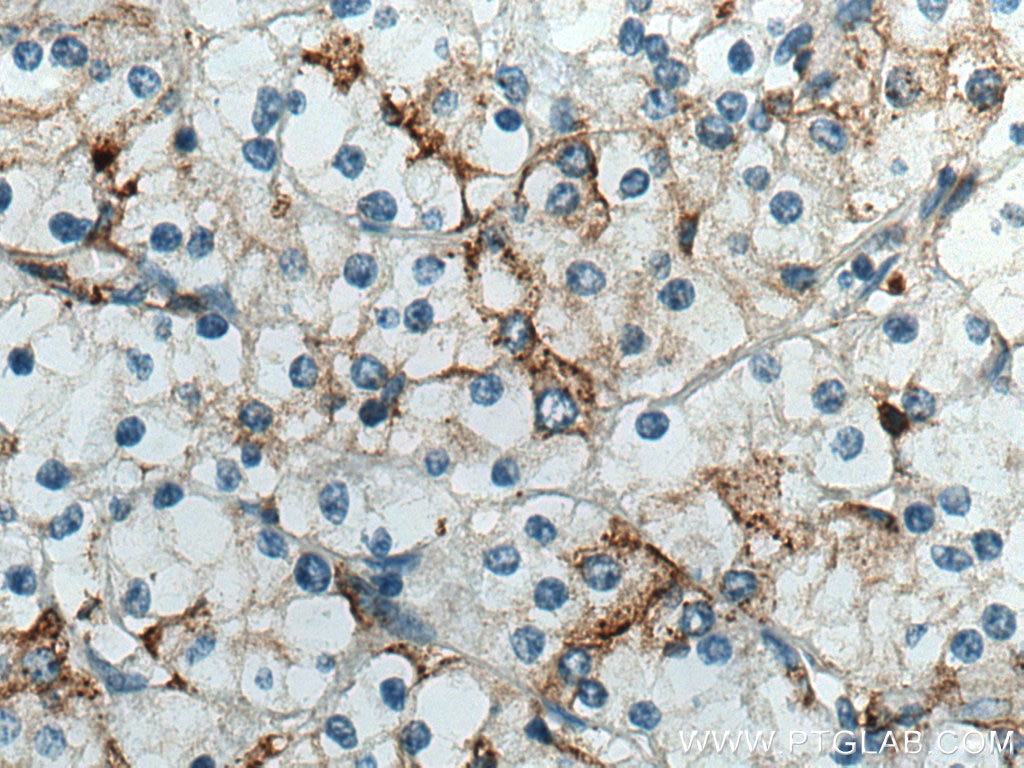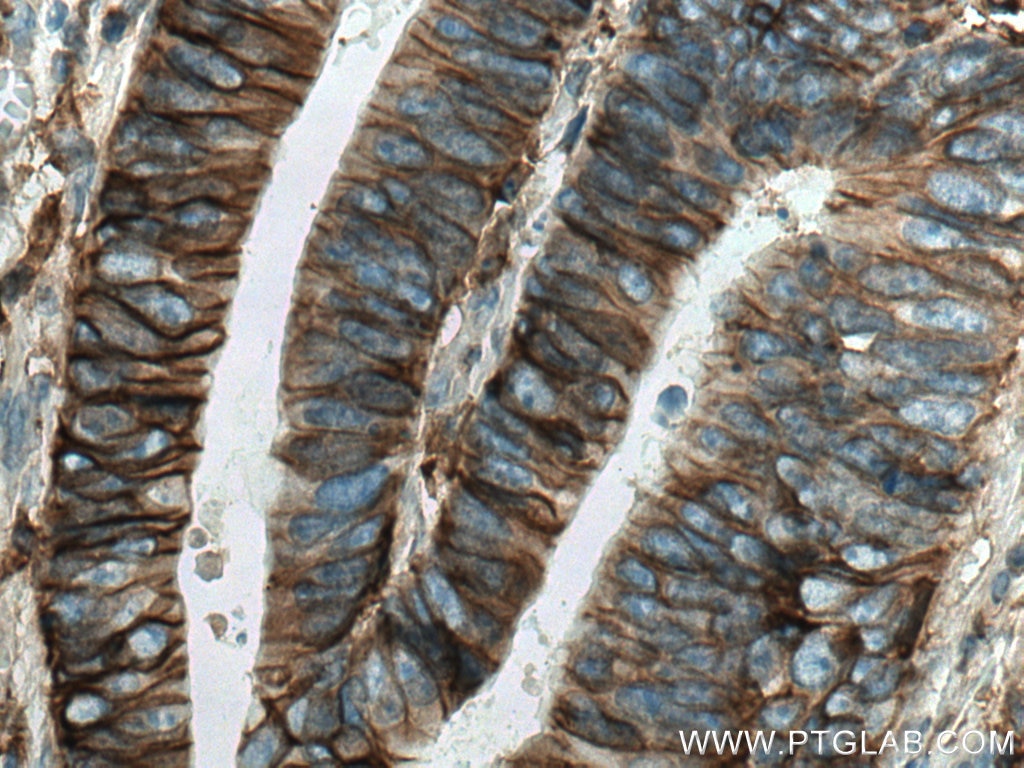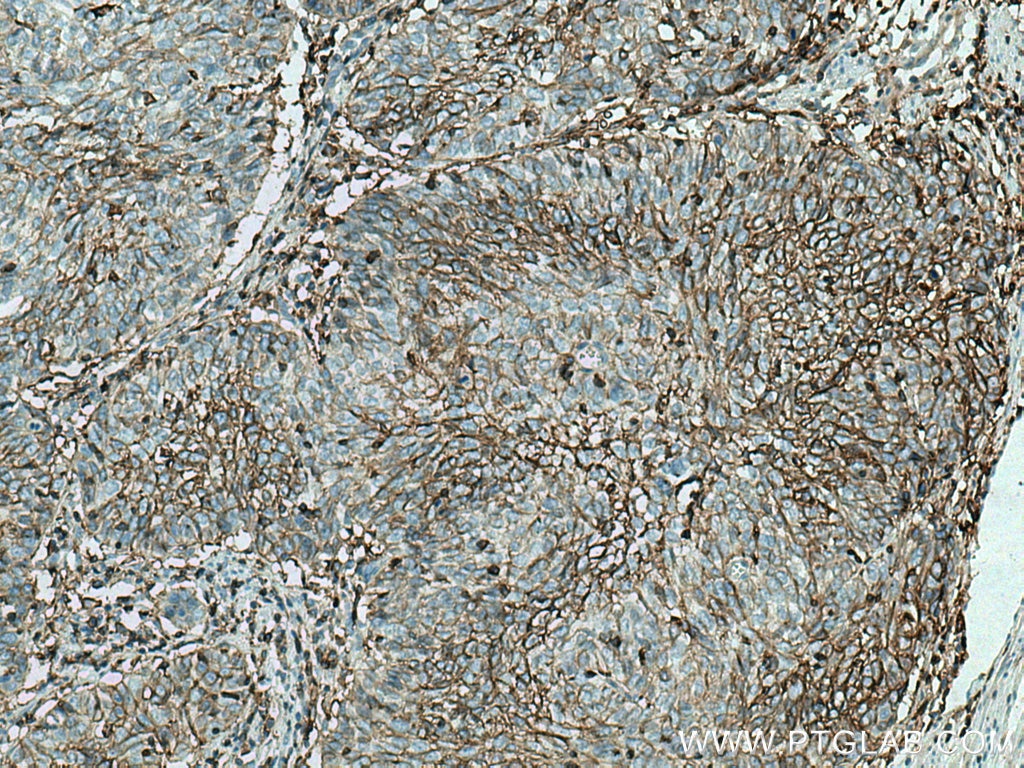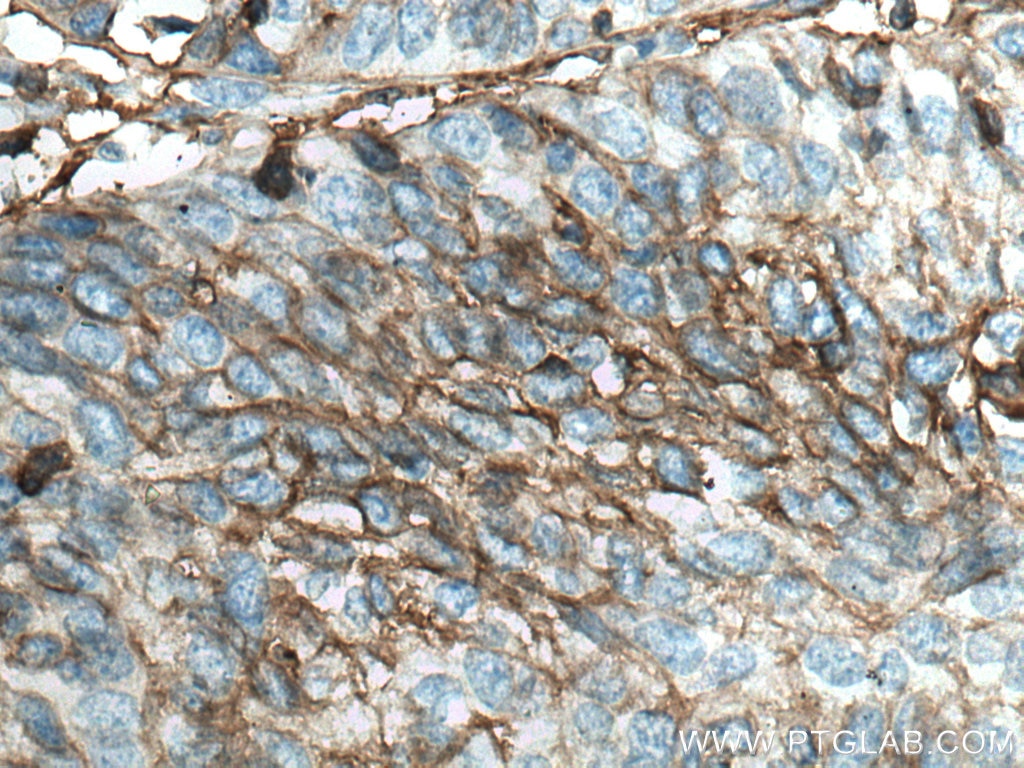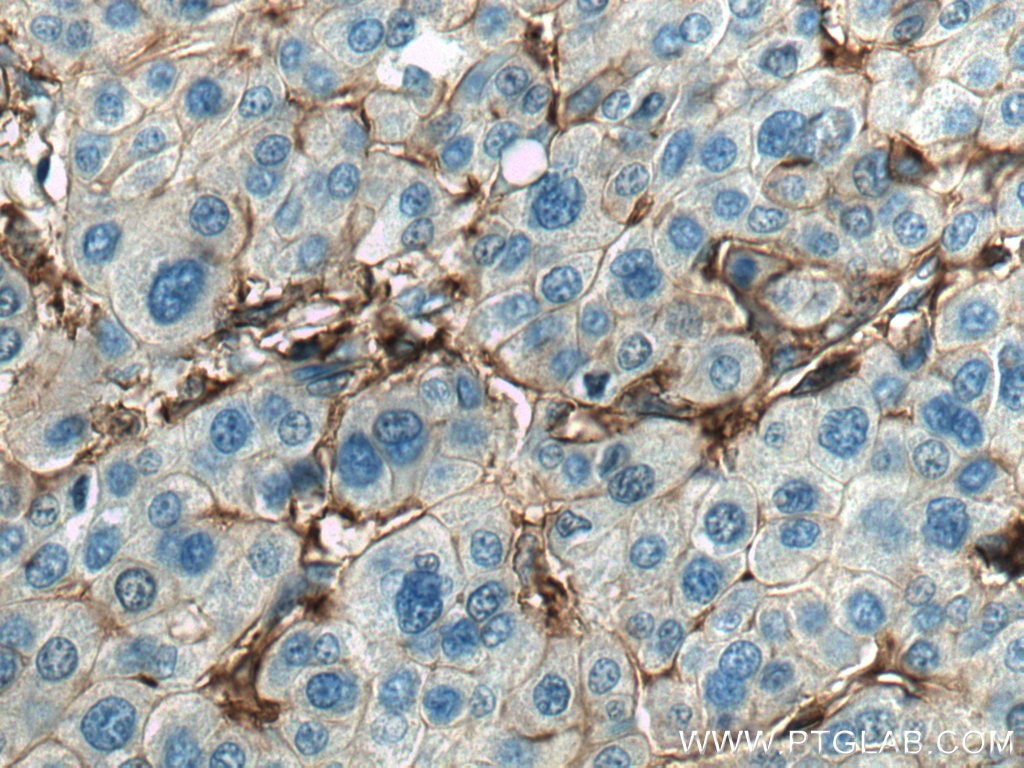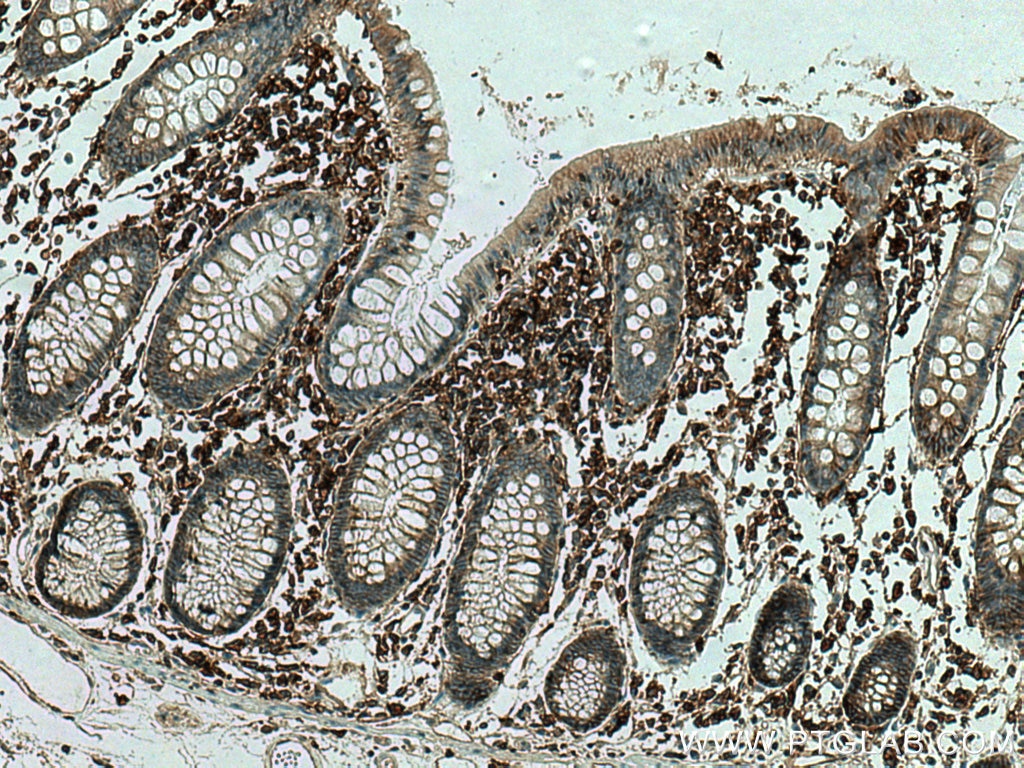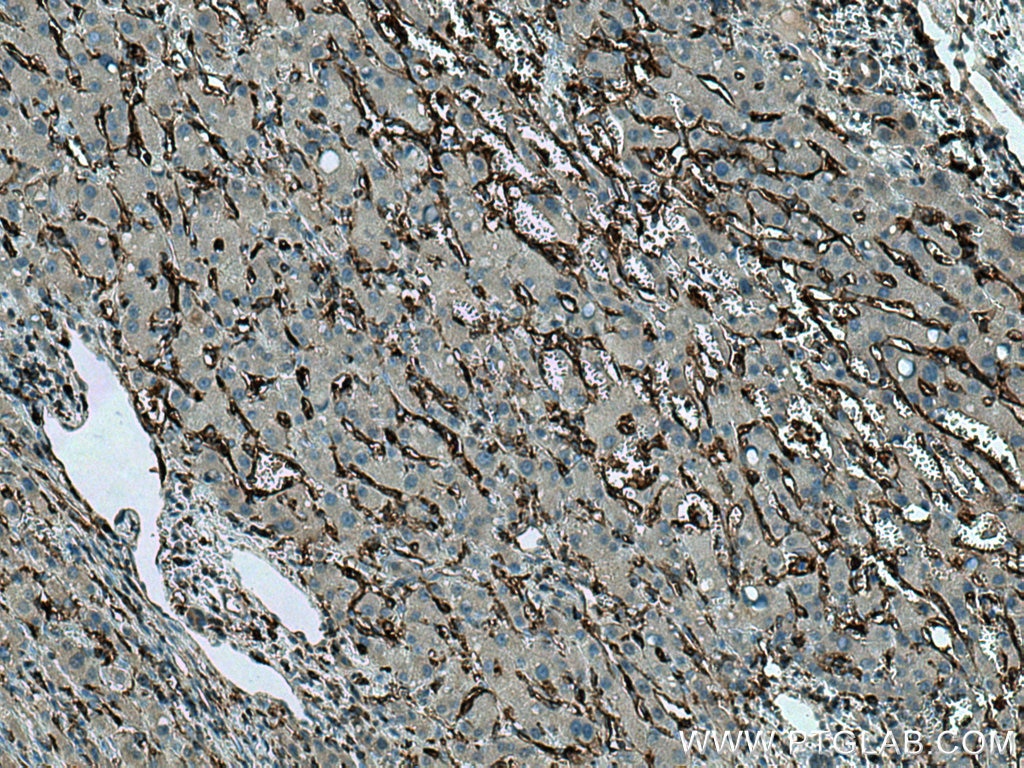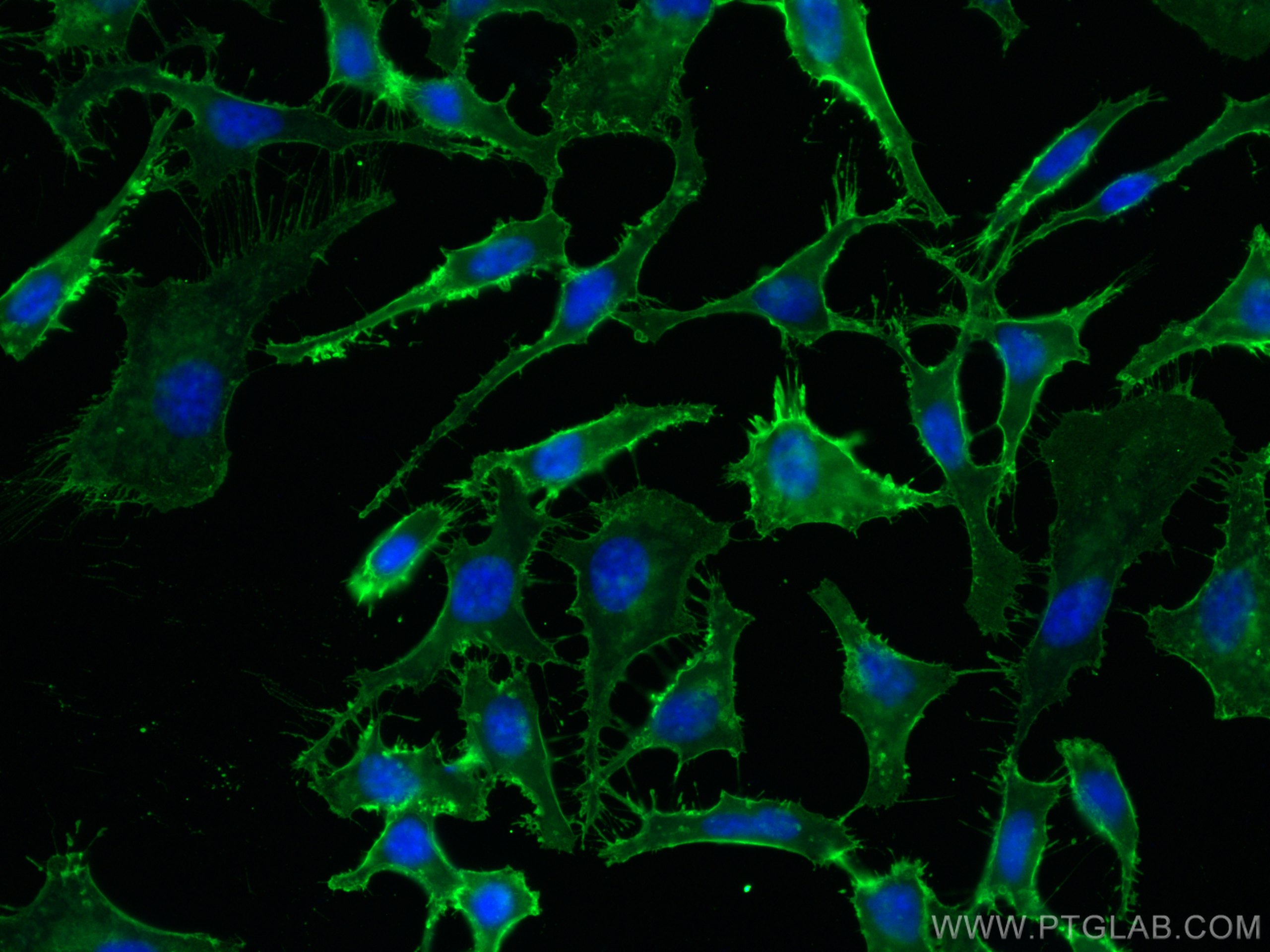CD98/SLC3A2 Monoklonaler Antikörper
CD98/SLC3A2 Monoklonal Antikörper für WB, IHC, IF/ICC, ELISA
Wirt / Isotyp
Maus / IgG2a
Getestete Reaktivität
human
Anwendung
WB, IHC, IF/ICC, ELISA
Konjugation
Unkonjugiert
CloneNo.
2B10F5
Kat-Nr. : 66883-1-Ig
Synonyme
Geprüfte Anwendungen
| Erfolgreiche Detektion in WB | HeLa-Zellen, Caco-2-Zellen, COLO 320-Zellen, HepG2-Zellen, HT-29-Zellen, Jurkat-Zellen, MCF-7-Zellen |
| Erfolgreiche Detektion in IHC | humanes Nierenzellkarzinomgewebe, humanes Zervixkarzinomgewebe, humanes Kolonkarzinomgewebe, humanes Leberkarzinomgewebe Hinweis: Antigendemaskierung mit TE-Puffer pH 9,0 empfohlen. (*) Wahlweise kann die Antigendemaskierung auch mit Citratpuffer pH 6,0 erfolgen. |
| Erfolgreiche Detektion in IF/ICC | HeLa-Zellen |
Empfohlene Verdünnung
| Anwendung | Verdünnung |
|---|---|
| Western Blot (WB) | WB : 1:5000-1:50000 |
| Immunhistochemie (IHC) | IHC : 1:500-1:2000 |
| Immunfluoreszenz (IF)/ICC | IF/ICC : 1:400-1:1600 |
| It is recommended that this reagent should be titrated in each testing system to obtain optimal results. | |
| Sample-dependent, check data in validation data gallery | |
Veröffentlichte Anwendungen
| WB | See 8 publications below |
| IF | See 1 publications below |
Produktinformation
66883-1-Ig bindet in WB, IHC, IF/ICC, ELISA CD98/SLC3A2 und zeigt Reaktivität mit human
| Getestete Reaktivität | human |
| In Publikationen genannte Reaktivität | human |
| Wirt / Isotyp | Maus / IgG2a |
| Klonalität | Monoklonal |
| Typ | Antikörper |
| Immunogen | CD98/SLC3A2 fusion protein Ag7301 |
| Vollständiger Name | solute carrier family 3 (activators of dibasic and neutral amino acid transport), member 2 |
| Berechnetes Molekulargewicht | 68 kDa |
| Beobachtetes Molekulargewicht | 85-94 kDa, 120-130 kDa |
| GenBank-Zugangsnummer | BC001061 |
| Gene symbol | CD98 |
| Gene ID (NCBI) | 6520 |
| Konjugation | Unkonjugiert |
| Form | Liquid |
| Reinigungsmethode | Protein-A-Reinigung |
| Lagerungspuffer | PBS with 0.02% sodium azide and 50% glycerol |
| Lagerungsbedingungen | Bei -20°C lagern. Nach dem Versand ein Jahr lang stabil Aliquotieren ist bei -20oC Lagerung nicht notwendig. 20ul Größen enthalten 0,1% BSA. |
Hintergrundinformationen
CD98 is a cell-surface heterodimer consisting of a heavy chain (CD98hc) and a light chain. CD98hc also interacts with certain integrin b-subunits to regulate cell migration, survival, proliferation, and adhesion/polarity. CD98hc is overexpressed on the cell surface of many cancers and increased CD98hc expression is associated with the development and progression of tumors.(PMID:25084765). This protein has 4 isoforms with the molecular mass of 58-71 kDa and can be detected 85-94 kDa due to glycosylation. The glycosylated CD98hc can links to a non-glycosylated light chain (~40 kDa) via a disulfide bond to form a heterodimeric CD98 antigen with molecular mass of 120-130 kDa (PMID: 14770309).
Protokolle
| PRODUKTSPEZIFISCHE PROTOKOLLE | |
|---|---|
| WB protocol for CD98/SLC3A2 antibody 66883-1-Ig | Protokoll herunterladen |
| IHC protocol for CD98/SLC3A2 antibody 66883-1-Ig | Protokoll herunterladenl |
| IF protocol for CD98/SLC3A2 antibody 66883-1-Ig | Protokoll herunterladen |
| STANDARD-PROTOKOLLE | |
|---|---|
| Klicken Sie hier, um unsere Standardprotokolle anzuzeigen |
Publikationen
| Species | Application | Title |
|---|---|---|
J Extracell Vesicles Homosalate boosts the release of tumour-derived extracellular vesicles with protection against anchorage-loss property. | ||
Nat Commun Specificities of exosome versus small ectosome secretion revealed by live intracellular tracking of CD63 and CD9. | ||
Cancer Cell Int Matrix stiffness-dependent STEAP3 coordinated with PD-L2 identify tumor responding to sorafenib treatment in hepatocellular carcinoma | ||
Phytomedicine Identification of the target protein and molecular mechanism of honokiol in anti-inflammatory action | ||
Oncol Lett Hsa_circ_0050900 affects ferroptosis in intrahepatic cholangiocarcinoma cells by targeting hsa‑miR-605‑3p to regulate SLC3A2 | ||
Proc Natl Acad Sci U S A Activation of polyamine catabolism promotes glutamine metabolism and creates a targetable vulnerability in lung cancer |
